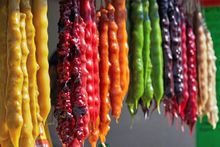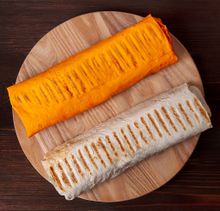Fukota
| Great Khanate of Fukota Erīcnüç Fügütäfök Erinü Fükötâqk |
||||||
|---|---|---|---|---|---|---|
|
||||||
| Motto: Fükötâjö With Fukota |
||||||
| Anthem: Qüq Föq Enü! Hail our Great Khan! |
||||||
| Capital and largest city | Cöqsü | |||||
| Official languages | Foeian | |||||
| Recognised regional languages | Buwcm Ilurani |
|||||
| Demonym | Föian, Foeian, Fukotan | |||||
| Government | Unitary parliamentary semi-constitutional elective monarchy | |||||
| - | Khan | vacant | ||||
| - | President | Züwuqŧn Zuqŧçm | ||||
| Legislature | Great Assembly of Fukota | |||||
| Establishment | ||||||
| - | Old Foeian Khanate | 673 | ||||
| - | Foeian Khanates | 1681 | ||||
| - | First Khanate of Fukota | 13 June 1796 | ||||
| - | Foeian Civil War | 4 January 1991 | ||||
| - | Second Khanate of Fukota | 6 November 1994 | ||||
| - | Current constitution | 5 October 1999 | ||||
| Area | ||||||
| - | 239,099.7 km2 92,317 sq mi |
|||||
| Population | ||||||
| - | 2022 estimate | 2,199,717 |
||||
| - | 2020 census | 2,150,764 | ||||
| - | Density | 9.2/km2 23.8/sq mi |
||||
| Gini (2022) | 27.5 low |
|||||
| HDI (2022) | very high |
|||||
| Currency | Foeian Zaqhm (ZQH) | |||||
| Time zone | SCT +2 | |||||
| Drives on the | right | |||||
| Internet TLD | .oe | |||||
| Part of a series on |
| Vaniuans |
|---|
| Nations |
Non-independent regions
Former nations
Balak Empire Baysanid Khanate Federated Kingdom Great Horde Holy Shanyedate Kothlen Horde Shomosvan Tamisang Hojanate Torosh Khanate Uhimid Hojanate Vos State |
| Languages |
| Religions |
| Other |
Fukota (Foeian:Fügütä; Fükötâ [ˈɸykœtɑ]), officially the Great Khanate of Fukota (Foeian:Erīcnüç Fügütäfök; Erinü Fükötâqk [ˈɛriny ˈɸykœtɑˀk]), is a landlocked country located in northern Vaniua. It is situated between Rolovian mountains in the north and Melkanchuta lake in the south. Fukota is bordered to the west by Khezan and Oyazan and to the east by Vogia and Central Federation (Araman). Cöqsü is the capital of Fukota and also the largest city. The country has a total population of 28 million people. The Foeian language is the majority-spoken language in Fukota; other languages include the Vos language and the Rusovian language. Qasamist Zarasaism is the predominant religion in Fukota.
The territory of Fukota is considered the urheimat of the Vaniuan peoples. However, the ancestors of modern Foeians settled Fukota only at the end of the 1st century CE. Gradually, old Foeian tribes began to form on the territory of the settlement of the Foeians. This period of history is called Old Fukota. In the second half of the 7th century, all the territories of Old Fukota are united under the rule of the Great Khan Gāhg I. After the death of Gāhg I, the territory of Old Fukota quickly became part of the Tamir Khanate.
The local Foeian dynasty was destroyed by the Mahavic invasion in the 13th century. After the Sunrise Horde left the territories of Fukota, for a short time it again became a single independent state. However, it quickly became a vassal of the Great Horde. Interaction with the Great Horde and its people led to the period of the Foeian renaissance. With the fall of the Great Horde, Fukota entered the period of warring khanates. This period ended with the unification of Fukota into the First Foeian Khanate. (Civil and Foeian wars part). After the end of the war, an economic crisis and hyperinflation began in Fukota, and part of the territories were annexed by neighbours. With the adoption of the constitution in 1999, modern Fukota begins.
Fukota comprises 10 regions, Cöqsü City and autonomous Lyoshulmian Republic. (economy part). Fukota is a member of IC (and probably something else)
Etymology
Tha name "Fukota" is derived from Fükö "Fukota (archaic), Melkanchuta lake coast" and suffix -tâ "country suffix, -land". Fükö is from Middle Foeian Fügö "Fukota", which is from Old Foeian phrase bǣ wwū "Father's land".
The name was first used in a small letter on a wooden tablet dated to the middle of the 3rd century CE: «ū bǣ wwū gū bōllm» - "I am a killer from the Father's land".
History
(WIP)
Prefoeic Fukota
Sasna Culture
Old Fukota
Gāhg I rule
Tamir Khanate
Sunrise Horde
Great Horde
Foeian Khanates
First Khanate of Fukota
Unification Wars
Foeian Civil War
Buw Revolution
Kúúlist Revolution
Foeian War
Modern Fukota
Geography
Geology
Climate
Biodiversity
Politics
Government
Fukota is the unitary parliamentary semi-constitutional elective monarchy.
Administrative divisions
The Khanate of Fukota is divided into 10 regions, 1 independent city and 1 autonomous republic.
Regions of Fukota
| Flag | Subdivision | Capital | Population (2022 Census) | Area (km2) | |
|---|---|---|---|---|---|
| 1 | 5,612,667 | TBA | |||
| 2 | Aq Region | TBA | 211,022 | TBA | |
| 3 | Âq Region | Uq | 4,616,243 | TBA | |
| 4 | Fü Region | TBA | 3,612,553 | TBA | |
| 5 | Köq Region | TBA | 861,442 | TBA | |
| 6 | Maq Region | TBA | 3,795,096 | TBA | |
| 7 | Ö Region | TBA | 1,122,506 | TBA | |
| 8 | Qo Region | TBA | 1,108,115 | TBA | |
| 9 | Rüq Region | TBA | 7,306,882 | TBA | |
| 10 | Tâq Region | TBA | 1,006,203 | TBA | |
| 11 | U Region | TBA | 661,177 | TBA | |
| 12 | Rusovian Autonomous Republic | TBA | 909,641 | TBA | |
Foreign relations
Military
Economy
Transport
Energy
Science and technology
Tourism
Demographics
Ethnic groups
Urbanisation
Language
The Foeian language is one of the Vaniuan languages, close to the Buwcm language, and both of them belong to the Foeic branch of the Vaniuan language family. It is the only official national language.
Ilurani, belonging to the Sylazic branch of the Vaniuan language family, is spoken primarily in the Ilurani Autonomous Republic, and has an official status in that territory.
The Buwcm language is widespread in northern central Fukota, mostly in Aq, Köq and Ö regions. Buwcm language has official status in Aq region
(Possibly some mixed languages)
Education
Healthcare
Religion
Culture
Heritage
Architecture
Literature
Art
Music
Theatre
Film
Cuisine
The Foeian cuisine is closely related to neighbouring cuisines and varies from region to region.
The most famous Foeian dishes are shawarma and churchkhela. Foeian cuisine also includes: lavash, dolma, yogurt, ayran, circassian cheese and circassian smoked cheese, lokum and ajika. Various sauces, fish, crustaceans, meat, fruits, vegetables and berries can also be added to dish. Most of recipies are derivatives from local traditions of small villages all across Fukota. Usually, dishes are served with some non-alcoholic beverages, most often, it's juice.







